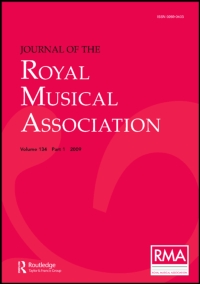Article contents
Orchestral and Choral Balance
Published online by Cambridge University Press: 01 January 2020
Extract
The subject of Orchestral and Choral Balance has by no means received the attention due to it from concert-givers, conductors, writers on music, or the public. It has occasionally called forth a casual remark from Press critics when something beyond the ordinary has been noticeable in a performance; writers on orchestration have touched upon it to some extent, and an occasional lecture has been devoted to it; but in nearly every case there has been a mere nibbling at the fringe of a great subject. Even where a general survey has been attempted, it has often taken the form of a sermon preached upon some definite text, such as, for example, the otherwise valuable paper read by Professor Prout before the last Conference of the Incorporated Society of Musicians. In that paper, Dr. Prout showed that his choice of the subject was due to his having noticed a few bad examples of ill-considered balance between choir and band, where the choir was numerically much too strong for the orchestra, such as at the Handel Festivals, to a smaller extent in the Albert Hall, and to a still smaller extent at the Festivals of Birmingham and Leeds. But this is only one aspect of the subject. And though one must admit that the indictment against these performances was justified, I fail to see any justification for a general attack in the same direction upon the relative proportions of bands and choirs in this country. It is sufficient to point out that though the band may be frequently overpowered by the choir at the Crystal Palace and at the Albert Hall, the complaint of many musicians who really know what they are talking about is that many choral societies are painfully overweighted by their accompaniments.
- Type
- Research Article
- Information
- Copyright
- Copyright © Royal Musical Association, 1901
- 1
- Cited by


